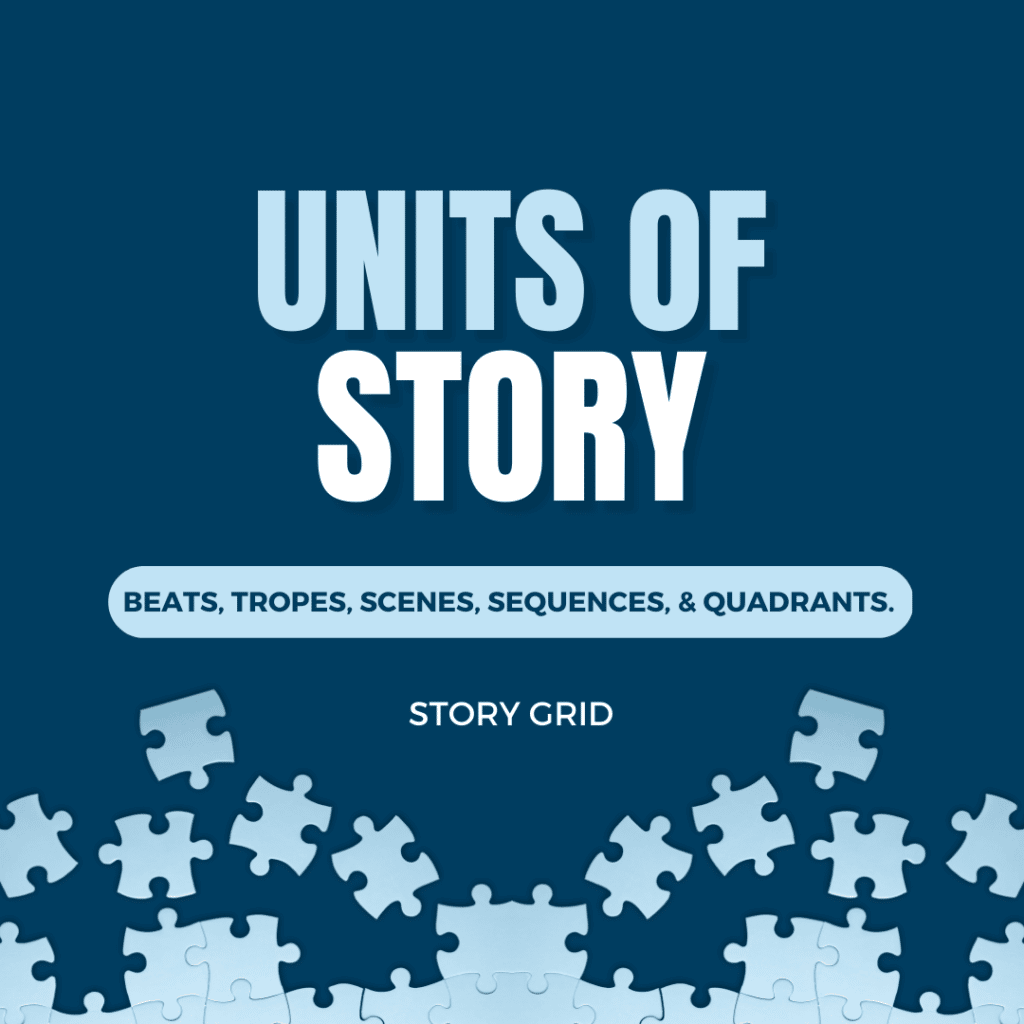What are Units of Story?
Units of story are a way of dividing our work into manageable pieces that can be examined and edited to create a story that works. Every story is made up of these pieces, and together they make up a global whole.
Most people talk about units of story inconsistently. Common terms mean different things to different people, which can be confusing and lead to frustration. At Story Grid, we define the units of story with specificity to help writers and editors understand how these parts are similar and different, how they function, and how they create a coherent whole that works together.

What are some key features of Units of Story?
- A Unit of Change. Stories are about change because although they entertain us, they also help us to solve the perennial problems that arise from unexpected change in our world. By learning about the type of change happening at each level of story, we can more effectively understand a story’s inner workings and how to construct them.
- Conflict. Conflict forces AVATARS (or characters) to change. The pursuit of OBJECTS OF DESIRE by the protagonist and the antagonist causes conflict throughout the story. The continued pursuit of their mutually exclusive goals forces the protagonist to make difficult choices that reveal character.
- FIVE COMMANDMENTS OF STORYTELLING. Each unit of story abides by the Five Commandments of Storytelling to form a structure audience members recognize as a story. By embedding this structure, the writer can effectively dramatize the CONTROLLING IDEA, the message the ARTIST wants to communicate.
Beats
BEATS are the smallest unit of story, which writers use to convey the details of the ALTERNATE WORLD, AVATARS, and story events to their readers. A beat is a micro interaction that demonstrates a change in energy and must always have an input and usually has an output.
Tropes
TROPES are the building blocks of SCENES that writers use to show changes in the microstrategies of AVATARS pursuing scene-level goals. Avatars change their verbal and nonverbal actions when they succeed or fail to achieve their desired outcome or VALUE SHIFT.
Scenes
SCENES are the building blocks of our stories. These units of story dramatize definable VALUE SHIFTS for the AVATARS and their CONTEXT (or setting). The value shifts that occur in each working scene of the story incrementally build the global arcs of change.
Sequences
SEQUENCES establish irreversible changes in the global stakes as AVATARS in the story pursue OBJECTS OF DESIRE that span multiple scenes and VALUE SHIFTS. The avatars change through the choices they make in response to inputs from the CONTEXT (or setting) and as they acquire new skills or knowledge to face the global problem raised by the INCITING INCIDENT.
Quadrants
A QUADRANT is a unit of story that demonstrates the stages of development for an AVATAR through their ability to adapt to change in the global CONTEXT. Each of the four quadrants of a story demonstrates the protagonist’s perception or approach to the story’s primary conflict. As conflict builds at every level of story, the protagonist is forced to change how they see and engage with the global problem.
Additional Resources:
- Story Grid: What Good Editors Know by Shawn Coyne
- Story Grid 101: The Five First Principles of the Story Grid Methodology by Shawn Coyne